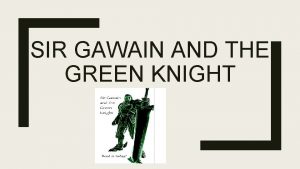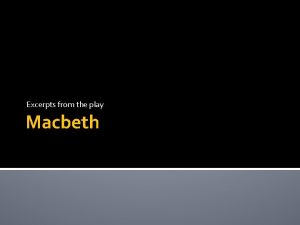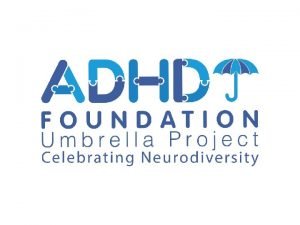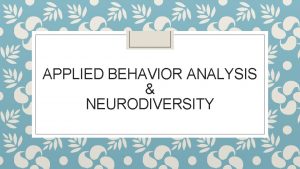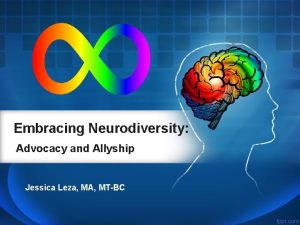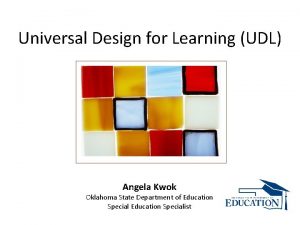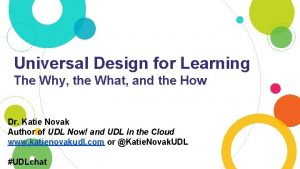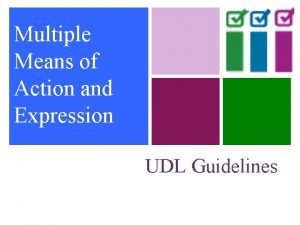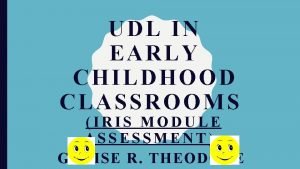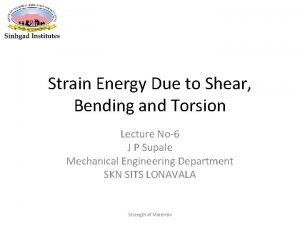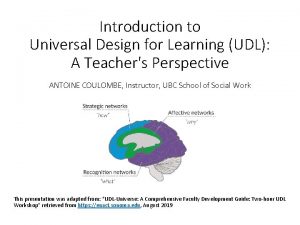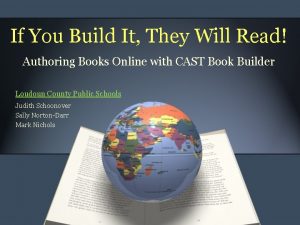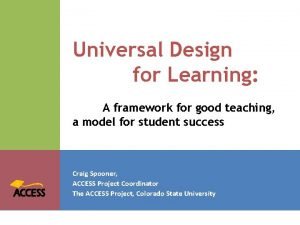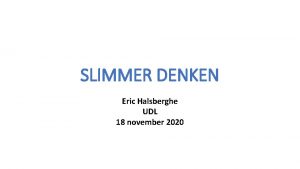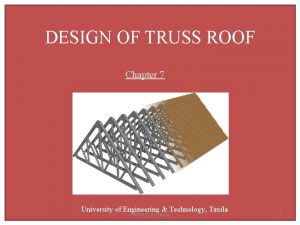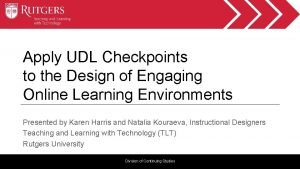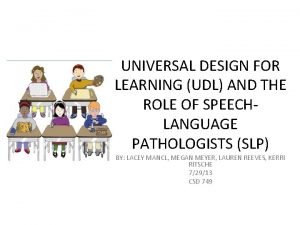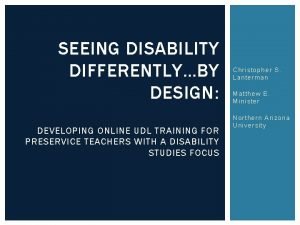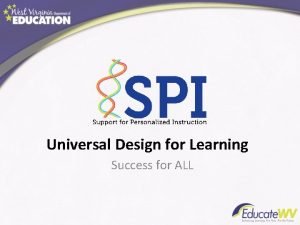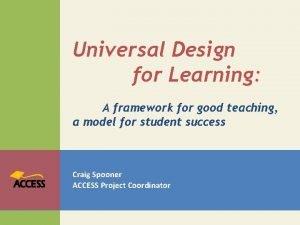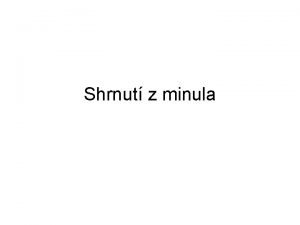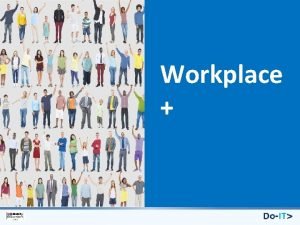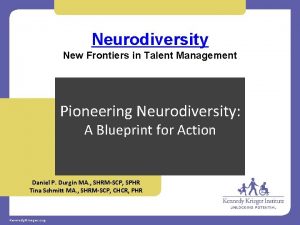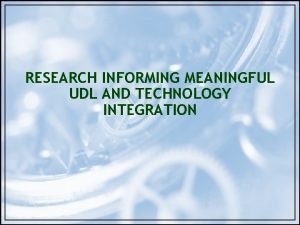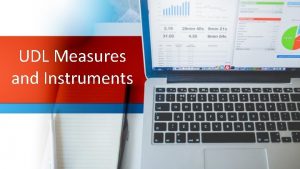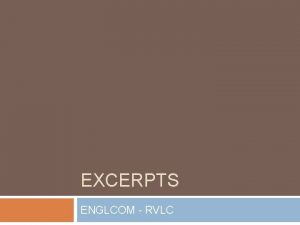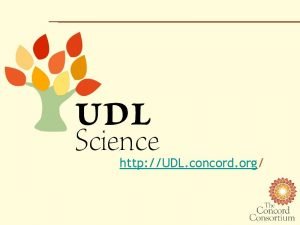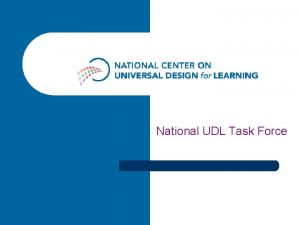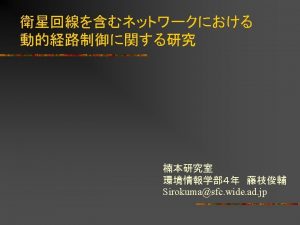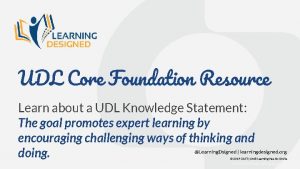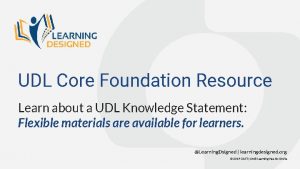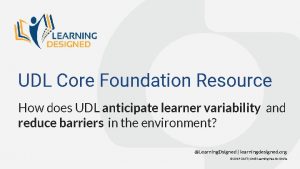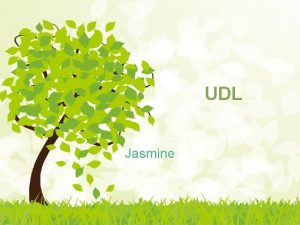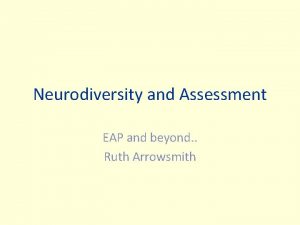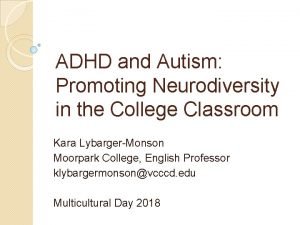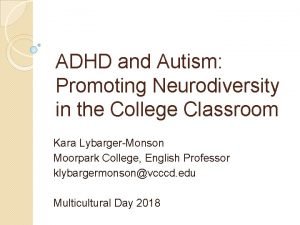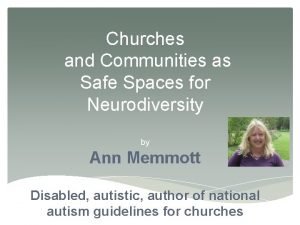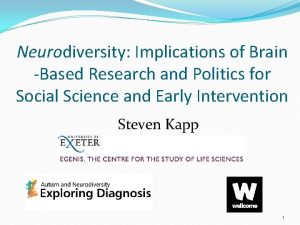Ideas from Neurodiversity and UDL Excerpts from Neurodiversity





















- Slides: 21

Ideas from Neurodiversity and UDL Excerpts from: Neurodiversity in the Classroom by Thomas Armstrong and www. udlcenter. org

What is Neurodiversity? • Coined in late 1990’s by journalist Harvey Blume and autism activist Judy Singer • Internet sources, “ An idea which asserts that atypical (neurodivergent) neurological development is a normal human difference that is to be recognized and respected as any other human variation. ” • Ecological metaphor: Biologist Gerald Edelman supports this view, “ The more we study the brain, the more we understand that it functions less like a computer and more like an ecosystem” “ a unique rainforest”

What do Neurodiverse students need? • Unique ecological nutrients in order to blossom • Teachers should seek to discover student’s unique requirements for optimal growth and then use differentiated strategies to help them • Paradigm shift from a deficit and remediation(connecting what has been damaged) model to one based on cultivation of strengths

What is positive niche construction? • Need to have a deep respect for each unique brain • Create the best differentiated learning environment • Scientists say that positive niche construction is as important for survival as natural selection (organisms better suited to their environment survive and produce more offspring)

What are the components of positive niche construction? • Strength awareness of each child: align teacher expectations to that idea Understanding of each child’s strengths • Positive role models: children are powerfully influenced by the adults seen in their daily lives. Existence of “mirror neurons”- brain cells fire when we do something but also when we observe others doing the same thing (Rizzolatti & Craighero, 2004) •

What are the components of positive niche construction? ------continued • Assistive Technologies and Universal Design for Learning: assistive technology-tools for differentiating instruction for SWSN(students with special needs) Universal Design: originally developed by urban planners and architects to improve access for people with disabilities and benefitting the general public (example: curb cut on a city street-helps blind, people in wheelchairs, joggers, skateboarders, bikers, etc. )

What are the components of positive niche construction? -----continued • Universal Design for Learning is based on 3 primary brain networks (neuroscience basis) –What of learning(posterior area of cerebral hemisphere- “How” of learning-strategic networks in frontal areas of CH and “WHY” of learning- affective networks in subcortical areas • UDL implications for educators (CAST: Center for Applied Special technology) Strategies for : A)presenting information and content(B)ways to allow students to express what they know (C) stimulating and motivating student interest in learning

UDL Resources http: //www. cast. org/our-work/about-udl. html#. WJonk. Y-c. Fu. E Universal Design for Learning: Theory and Practice Anne Meyer and David Rose, who first laid out the principles of UDL in the 1990 s, provide an ambitious, engaging discussion of new research and best practices.

Affective Networks • The Why of Learning • Engagement: For purposeful, motivated learners, stimulate interest and motivation for learning

Recognition Networks • The WHAT of Learning • Representation: For resourceful, knowledgeable learners, present information and content in different ways

Strategic Networks • The HOW of learning • Action and Expression: For strategic, goal directed learners, differentiate the ways that the student can express what they know

Assistive Technologies/UDL • Audiobooks • Word processing programs, ( font size, color, word count feature, spell ) check/grammar checkers, tape recorders, Smart pen, speech to text, text to speech software, Dragon Search • Translate printed text into spoken language; Kurzweil reader, Soliloquy Learning’s readit , Amazon Kindle reader

What are the components of a positive niche construction? …continued • Enhanced Human Resources: build up a network of individuals to support the growth and development of a neurodiverse child • Affirmative career aspirations: set goals. Dreams of future may be squashed- use role models in society • Environmental modifications: IDEA of 2004 builds in LRE and consideration is made as to what environment is best. ( example: outdoors, private space –children with EBD) • View whole school and surrounding community as a network of microhabitats

Students with Learning Disabilities have many talents • 5% of all students in Public Schools (U. S. Dept. of Education, 2011) • Common for students with dyslexia to show unusual skill in drawing, doing mechanical puzzles or building models (Geschwind, 1982) • Deemed as having had dyslexia; Andy Warhol, Robert Rauschenberg, Auguste Rodin, Jackson Pollock, Leonardo da Vinci • Study of 34 inventors with high levels of mechanical spatial ability reported weaknesses in writing and verbal areas and more than half reported that they were low-achievers in school and failed at least one class(Colangelo, Assouline, Kerr, Huesman, & Johnson, 1993)

Positive Role Models Field Individuals with Learning Disabilities Sciences Thomas Edison- Michael Faraday-Carol Greider-Alexander Graham Bell Business Richard Branson-Henry Ford-Charles Schwab-Ted Turner Entertainment Tom Cruise-Cher- Whoopi Goldberg- Orlando Bloom Sports Muhammad Ali-Greg Louganis- Nolan Ryan- Bruce Jenner (Caitlin) Writers John Irving-Fannie Flagg- Scott Adams- Agatha Christie- Philip Schultz( Pulitzer Prize for Poetry, 2008), Stephen J. Cannell, Wendy Wasserstein

Highlight a different personality each week • http: //dyslexia. yale. edu/successstories. html • (Yale Center for Dyslexia and Creativity: bios of successful individuals with dyslexia)

Enhanced Human resources • Support person; GE teacher, SE teacher, tutor, peer , older student, study buddy, coach, adult from extra-help • Helpful for student to know someone believes in him • Help student find and pursue interests in an area in which he/she could find success

Strength based strategies • Multi-sensory approach is known as the best instructional intervention for students with reading and writing difficulties (Slingerland, 1996) • Learn letters and sounds with clay, pipe cleaners • Concepts with chalk, sandpaper, colored blocks , tiles, write captions for pictures, story boards for sequence • Personalize learning • Use video, use camera to record experiences, graphic organizers, mindmapping, use of software, Google image search, doodling while listening, use arts for academic subjects, big picture, LEGOS, 3 -D materials to show language arts concepts

Affirmative Career Aspirations • Students with LD –Creative, visual thinking • Expertise in the field of business • Suitable choices for SWD: Animator, engineer, physicist, artist, interior decorator, sculptor, graphic artist, molecular biologist, graphic software designer, surveyor, architect, Fashion designer, Pilot, Cartographer, inventor, photographer and more

Environmental Modifications • Determine an LRE where difficulties with the printed word are minimized and strengths are maximized • Art or shop class as an oasis • Arts-oriented magnet school or one that puts a great deal of attention on S. T. E. M. • Extra-curricular activities that capitalize on strengths, apprenticeship programs, service learning

Scenarios • Poor niche construction • Positive niche construction
 In this excerpt from sir gawain and the green knight
In this excerpt from sir gawain and the green knight Excerpts from macbeth
Excerpts from macbeth Napoleonic code excerpts
Napoleonic code excerpts Neurodivergent umbrella
Neurodivergent umbrella Neurodiversity types
Neurodiversity types Neurotypical definition
Neurotypical definition Difference between udl and differentiation
Difference between udl and differentiation Mtss and udl
Mtss and udl Multiple means of action and expression
Multiple means of action and expression Iris module
Iris module Strain energy stored due to bending is
Strain energy stored due to bending is Ron mace
Ron mace Udl book builder
Udl book builder Udl nontraditional students
Udl nontraditional students Udl voorbeelden
Udl voorbeelden Truss panel point
Truss panel point Udl checkpoints
Udl checkpoints Udl
Udl Udl
Udl Iris udl assessment answers
Iris udl assessment answers Udl percentage
Udl percentage Fce udl
Fce udl
